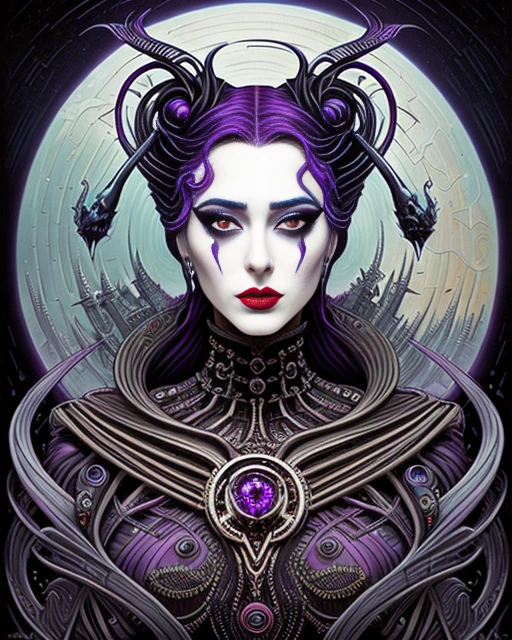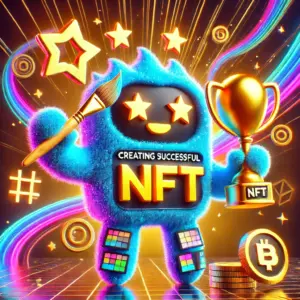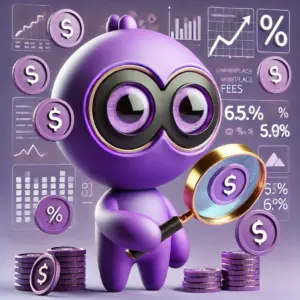In the ever-evolving digital landscape, non-fungible tokens (NFTs) have emerged as revolutionary digital assets, captivating creators, collectors, and investors alike. But amidst the hype, a fundamental question arises: does every NFT require the blockchain? To unravel this riddle, we must delve deep into the intricate relationship between NFTs and the technology that underpins them.
Understanding the Essence: What are NFTs and Blockchains?
Before diving into their connection, let’s establish a clear understanding of both entities. An NFT, or non-fungible token, is a unique digital representation of an asset, whether it be artwork, music, virtual land, or even a tweet. Unlike fungible assets like cryptocurrencies, where one unit is identical to another, each NFT carries unique data that sets it apart, making it irreplaceable and verifiable.
Now, imagine a vast, decentralized ledger – that’s essentially what a blockchain is. This tamper-proof record-keeping system stores information in blocks, chronologically linked together, creating an immutable history. This transparency and security make blockchains the ideal platform for recording the ownership and authenticity of NFTs.
The Symbiotic Bond: Why Blockchains Became the Go-to for NFTs
Traditionally, ownership of digital assets faced challenges. Copies were easily made, authenticity was difficult to prove, and ownership rights remained ambiguous. Blockchains offered a game-changer. By minting, or registering, an NFT on a blockchain, creators could establish undeniable ownership, scarcity, and a verifiable transaction history. This empowered artists, musicians, and other creators to monetize their digital work in a previously unimaginable way.
Furthermore, blockchains offered additional benefits:
- Decentralization: No single entity controls the information, reducing reliance on centralized authorities and potential manipulation.
- Interoperability: NFTs on certain blockchains can be traded across different platforms, promoting wider accessibility and liquidity.
- Smart contracts: These self-executing agreements automate tasks like royalty payments to creators, adding transparency and fairness to transactions.
Beyond the Blockchain: Exploring Alternative Avenues for NFTs
However, the blockchain isn’t the only game in town. As the NFT ecosystem evolves, alternative approaches are emerging:
1. Centralized Platforms: Some platforms utilize their own internal databases for recording NFT ownership, offering scalability and user-friendliness. However, concerns regarding centralized control and potential manipulation linger.
2. Hybrid Models: Certain platforms combine blockchain elements with centralized infrastructure, aiming to balance security with scalability. This approach is still in its nascent stages, and its long-term viability remains to be seen.
3. Tokenized Assets on Traditional Ledgers: While not strictly NFTs, assets can be “tokenized” on centralized ledgers, representing ownership but lacking the full decentralization and immutability of blockchain-based NFTs.
The Great Debate: Advantages and Disadvantages of Each Approach
The choice between blockchain and alternative approaches for NFTs revolves around specific needs and priorities. Here’s a breakdown of key considerations:
Blockchain:
Advantages:
- Transparency and security: Verifiable ownership and transaction history.
- Decentralization: Reduced reliance on centralized authorities.
- Interoperability: Potential for wider reach and liquidity.
Disadvantages:
- Scalability: Blockchains face limitations in processing large volumes of transactions.
- Energy consumption: Some blockchains require significant energy for operation, raising environmental concerns.
- Technical complexity: Understanding and navigating blockchains can be challenging for beginners.
Alternative Approaches:
Advantages:
- Scalability: Can handle higher transaction volumes compared to some blockchains.
- User-friendliness: Often more user-friendly and accessible than blockchain-based platforms.
- Lower costs: May have lower transaction fees compared to some blockchains.
Disadvantages:
- Centralization: Potential for manipulation and control by the platform owner.
- Less secure: May be less resistant to tampering and fraud compared to blockchains.
- Limited interoperability: NFTs may be restricted to the specific platform’s ecosystem.
The Evolving Landscape: Predicting the Future of NFTs and Blockchains
The future of NFTs and their relationship with blockchains remains an open question. While blockchains offer unique advantages in security and decentralization, their scalability limitations and environmental impact pose challenges. Alternative approaches may gain traction if they can address these concerns effectively. Ultimately, the ideal choice will likely depend on the specific needs and priorities of creators, collectors, and the evolving NFT ecosystem.
Beyond the Binary: A Spectrum of Possibilities
Instead of viewing it as a binary choice, it’s important to recognize the spectrum of possibilities. Hybrid models may emerge, combining the strengths of different approaches. Additionally, advancements in blockchain technology, such as layer-2 solutions, could address scalability concerns.
While the previous section provided a foundational understanding, the intricacies of NFTs and their connection to blockchains deserve further exploration. Let’s delve into specific use cases, potential challenges, and exciting possibilities on the horizon.
Use Cases: Where NFTs Thrive on the Blockchain:
- Digital Art and Collectibles: The art world has embraced NFTs, allowing artists to sell unique pieces, ensure authenticity, and even program royalties for future sales. Similarly, rare digital collectibles like CryptoPunks and Bored Apes find value in their verifiable scarcity and blockchain-backed ownership.
- Gaming and Metaverse Assets: In-game items like weapons, skins, and virtual land are increasingly represented as NFTs, enabling ownership, trading, and interoperability across different platforms within the metaverse. This creates a robust digital economy fueled by blockchain technology.
- Music and Intellectual Property: Musicians can release limited-edition songs as NFTs, offering fans exclusive ownership and potential future benefits. Additionally, intellectual property rights like patents and copyrights can be tokenized on the blockchain, streamlining ownership management and facilitating secure transactions.
- Fractional Ownership of Real-World Assets: High-value assets like real estate or artwork can be fractionalized into NFTs, enabling broader investor participation and increased liquidity. This opens up new avenues for investment and democratizes access to previously exclusive assets.
Challenges and Considerations:
- Environmental Impact: The energy consumption of certain blockchains raises concerns about the environmental footprint of NFTs. However, advancements in energy-efficient consensus mechanisms and layer-2 solutions offer promising alternatives.
- Regulation and Legal Landscape: The legal framework surrounding NFTs and blockchain technology is still evolving, creating uncertainties for creators, investors, and platforms. Clear regulations and legal frameworks are crucial for fostering a sustainable and responsible NFT ecosystem.
- Interoperability and Fragmented Ecosystem: While some blockchains offer interoperability, fragmentation remains a challenge, limiting the full potential of NFTs. Continued development of cross-chain bridges and interoperable standards is necessary for a more unified NFT experience.
- Accessibility and User Experience: The technical complexity of blockchain technology can be daunting for newcomers. User-friendly interfaces and educational resources are essential to broaden accessibility and participation in the NFT space.
Looking Forward: The Future of NFTs and Blockchains
Despite the challenges, the potential of NFTs and their connection to blockchains remains vast. Here are some exciting possibilities on the horizon:
- NFTs and the Creator Economy: NFTs empower creators to monetize their work in innovative ways, fostering a more direct connection with their audience and generating sustainable income streams.
- Tokenized Communities and Governance: NFTs can be used to represent membership in communities or DAOs (decentralized autonomous organizations), enabling token holders to participate in governance decisions and shape the future of these communities.
- Supply Chain Transparency and Traceability: NFTs can be used to track the origin and movement of goods through supply chains, enhancing transparency and combating counterfeit products.
- Identity Management and Self-Sovereign Data: NFTs can represent individual identities and associated data, empowering users with greater control over their personal information in a secure and decentralized manner.
Conclusion: A Collaborative Journey
The relationship between NFTs and blockchains is not a static one. It’s a dynamic journey driven by innovation, collaboration, and continuous exploration. As the ecosystem evolves, addressing the challenges and embracing the possibilities will be crucial for unlocking the full potential of NFTs and shaping a more secure, transparent, and equitable digital future.
Remember, this is just the beginning of the conversation. As the NFT landscape continues to evolve, new questions will arise and new solutions will emerge. By staying informed, engaged, and open to innovation, we can collectively navigate the exciting future of NFTs and blockchains.
I hope this expanded version provides a more comprehensive and insightful exploration of the topic. Feel free to ask any further questions you may have!






